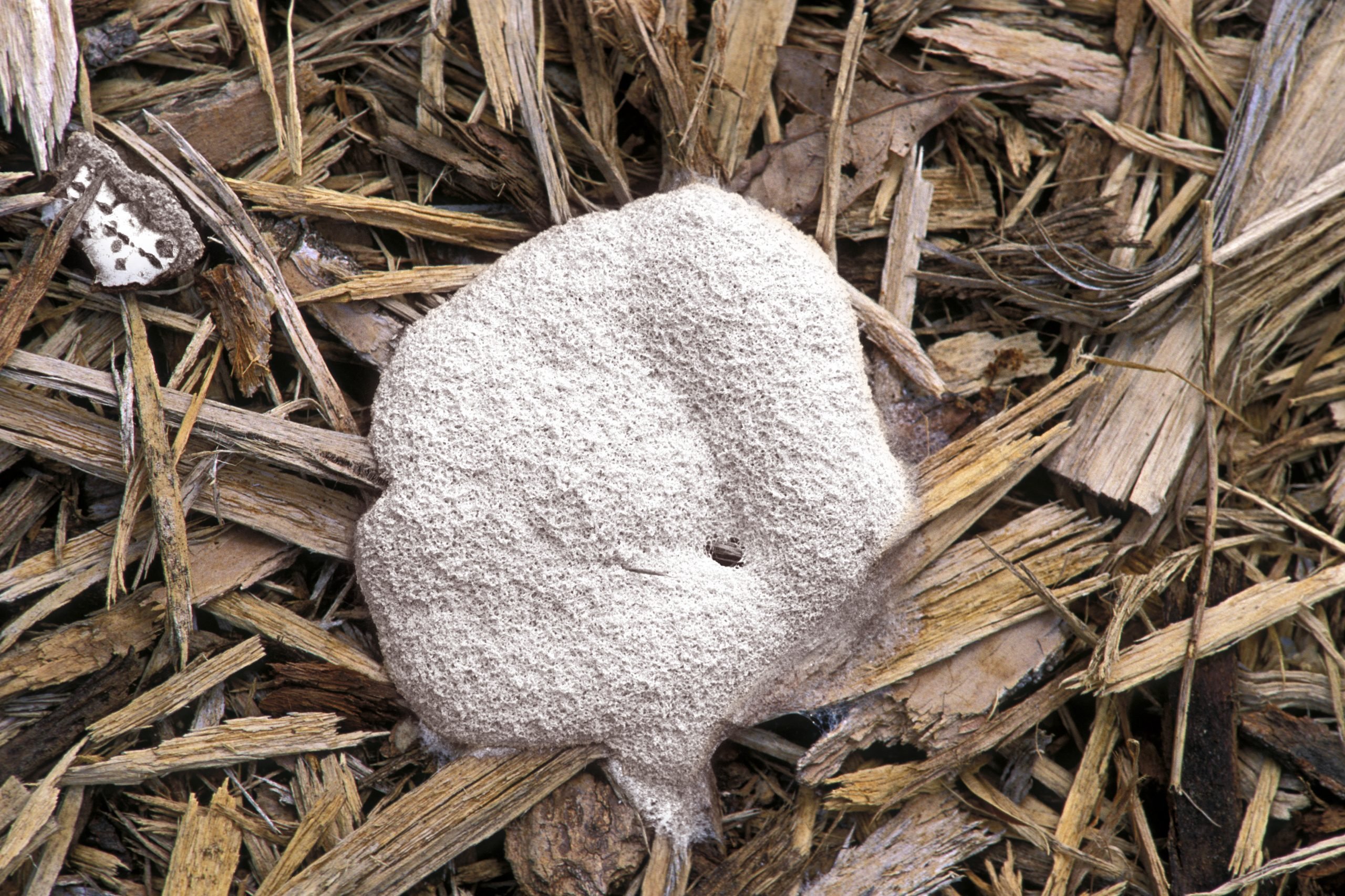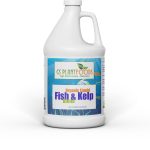Yes, compost is supposed to mold. Composting is a natural process where organic matter decomposes, and mold is a byproduct of this decomposition.
Compost, a nutrient-rich soil conditioner, is created through the breakdown of organic waste, such as food scraps, yard waste, and leaves.
During this process, microorganisms called fungi, including mold, play a crucial role in breaking down the organic matter. Mold helps break down tougher materials and accelerates composting.
While mold may not be visually pleasing, it is a sign that the decomposition process is active and progressing effectively.
However, an overpowering or unpleasant odor may indicate an imbalance in the compost, requiring adjustments to the composting conditions.
Overall, mold in compost is a natural phenomenon and an indicator of a healthy composting process.
How To Form Mold in Compost And Affect?
Compost is a natural process that involves the decomposition of organic matter, such as kitchen scraps, yard waste, and animal manure, to create nutrient-rich soil. Composting works by providing the necessary conditions for microorganisms – bacteria, fungi, and other decomposers – to break down organic materials.
These microorganisms consume the organic matter and produce heat as a byproduct, resulting in the breakdown of the materials over time.
Mold formation in compost is a common occurrence and a natural part of the decomposition process. Mold is a type of fungi that thrives in moist environments, making compost piles an ideal habitat.
The presence of mold in compost is an indication of healthy decomposition. It helps break down organic materials further and also aids in nutrient cycling.
The formation of mold in compost is influenced by two key factors – moisture and oxygen. Moisture is required to support microbial activity, but excessive moisture can create anaerobic conditions, favoring the growth of harmful organisms.
Proper moisture management is essential to control mold formation. Additionally, a well-aerated compost pile is crucial to provide oxygen to the microorganisms responsible for decomposition and minimize the growth of mold and other unwanted organisms.
What Are Different Types of Molds In Compost?
Molds are fungi that can be found in compost, and they come in various colors and shapes. The color of a mold can vary depending on its species and the environmental conditions. Here are some common types of molds that you might encounter in compost, along with their potential colors:
White Mold: White molds are common in compost and are usually fuzzy or powdery in appearance. They are typically white or light gray. White molds are often beneficial in the decomposition process, breaking down organic matter. They thrive in well-aerated, moist compost.
Green Mold: Green molds are known for their greenish coloration, which can range from light green to bluish-green. They are often a sign of excess moisture in the compost pile. To prevent green mold, ensure proper aeration and drainage in your compost.
Black Mold: Black molds are dark in color, ranging from dark gray to black. They can be slimy or powdery and typically grow on decaying organic material. While they may indicate anaerobic conditions, they can also contribute to the decomposition of tougher materials.
Blue Mold: Blue molds can appear bluish-green to bluish-gray. They are less common in compost but can develop under specific conditions. Their presence could be due to certain types of fungi that thrive in the compost environment.
Yellow Mold: Yellow molds can be yellowish and are less common in compost. They might appear on specific organic materials, and their presence may indicate the presence of certain types of mold spores or fungi.
Orange Mold: Orange molds are relatively rare but can develop on decaying organic matter. They have an orange or reddish hue and are often associated with specific types of molds or fungal growth.
Pink Mold: Pink molds can appear pink or salmon-colored. They are less common in compost but can develop under certain conditions. Their presence may suggest unique environmental factors or types of microorganisms in the compost.
Brown Mold: Brown molds are typically brown or dark in color and are common in compost, especially on woody or lignin-rich materials. They are often involved in breaking down tougher plant matter.
Gray Mold: Gray molds can appear gray or silvery in color and are often associated with decaying plant material. Their presence may be a part of the natural decomposition process.
The color of molds can vary not only due to the species but also due to the stage of their life cycle and the specific environmental conditions in your compost pile.
While some molds are considered beneficial in composting as they help break down organic matter, others may suggest imbalances in your compost, such as inadequate aeration, excess moisture, or poor temperature control.
Can You Put Moldy Food in Compost?
Yes, you can put moldy food in a compost pile. Moldy food is a common and natural addition to compost because it’s organic matter that will break down and decompose, contributing to the nutrient-rich compost you aim to create. However, there are a few important considerations to keep in mind:
Balance: To maintain a healthy compost pile, it’s essential to balance the types of materials you add. Moldy food, which is considered a “green” or nitrogen-rich material, should be balanced with “brown” or carbon-rich materials like dry leaves, straw, or shredded newspaper. This helps maintain the right carbon-to-nitrogen ratio for efficient decomposition.
Proper aeration: Moldy food can be wet, and too much moisture in the compost pile can lead to unpleasant odors and slow decomposition. To prevent this, ensure good aeration in your compost by turning it regularly and adding bulking agents like dry leaves to improve air circulation.
Covering: You can also bury moldy food under a layer of brown material or finished compost to help contain odors and prevent pests from being attracted to the compost pile.
Smaller pieces: Chopping or breaking down moldy food into smaller pieces can speed up the decomposition process and make it easier for microorganisms to work on them.
Avoid meat and dairy: While moldy fruits, vegetables, and bread are generally fine for composting, it’s advisable to avoid adding moldy meat, fish, or dairy products. These materials can attract pests, and their decomposition can be more challenging and potentially lead to unpleasant smells.
Odor control: If you’re concerned about odors, you can use a compost bin or tumbler with a secure lid to contain smells. Additionally, sprinkling a layer of finished compost or garden soil over the moldy food can help reduce odors.
The Benefits And Drawbacks Of Mold In Compost
The Benefits and Drawbacks of Mold in Compost
Nutrient availability and the decomposition process: Mold plays a crucial role in the decomposition process of compost. It breaks down organic matter, releasing nutrients that are essential for plant growth. The presence of mold in compost indicates an active and healthy decomposition process, ensuring nutrient availability for plants.
Importance of mold in soil health: Mold also enhances soil health by improving its structure and aeration. It helps in retaining moisture, preventing soil erosion, and promoting the growth of beneficial microorganisms.
Potential problems caused by excessive mold in compost: However, excessive mold growth in compost can introduce harmful pathogens and compete with plants for nutrients. It can also lead to a foul odor and attract pests.
Balancing mold levels in compost for optimal results: It is important to maintain a balance of mold levels in compost. Regular turning and proper moisture management can prevent excessive mold growth. Adding carbon-rich materials such as dried leaves or woodchips can help control mold levels and provide a balanced carbon-to-nitrogen ratio.
Managing Mold In Compost: Tips And Techniques
Compost is a natural process that involves the decomposition of organic material. It is not uncommon for compost to develop mold during the decomposition process. However, there are effective techniques to manage mold growth and ensure the compost remains healthy.
One important practice is controlling moisture levels in the compost pile. Excess moisture can create an ideal environment for mold to thrive. By monitoring and adjusting the moisture content, it is possible to minimize mold formation.
This can be done by adding dry materials or turning the compost pile to increase airflow and allow excess moisture to evaporate.
Turning and aerating the compost also helps to discourage mold growth. This process helps to distribute oxygen and break up clumps, creating a more balanced environment for decomposition.
Recognizing Harmful Mold In Compost: Identifying Red Flags
Compost is generally a beneficial and natural process that helps convert organic waste into nutrient-rich soil. However, it is not uncommon for compost to develop mold.
While some molds are harmless and even beneficial in the composting process, others can be harmful and pose a risk to human health.
Differentiating between harmless mold and harmful fungi:
The most important step in recognizing harmful mold in compost is being able to differentiate between harmless mold and harmful fungi. Harmless mold is usually white, gray, or black and has a fuzzy appearance. It helps break down organic matter and is not a cause for concern.
On the other hand, harmful fungi can be in various colors, including red, yellow, orange, or green. They often have a slimy or gelatinous texture and may produce a musty or foul odor.
Signs of pathogenic mold in compost:
Certain signs might indicate the presence of pathogenic mold in compost. These signs include the presence of large amounts of colorful mold, the presence of rotting or decaying material, and the absence of an earthy or fresh odor.
Risks and precautions associated with toxic mold in compost:
Toxic mold can pose risks to human health, especially when it comes into contact with skin or is inhaled. It can cause allergic reactions, respiratory issues, and even serious infections.
To prevent exposure to toxic mold, it is important to wear gloves, a mask, and long sleeves while handling compost.
Additionally, compost that is suspected to have toxic mold should not be used in vegetable gardens or near areas where people spend a lot of time.
Faq:
Can Compost Mold Be Harmful To Humans Or Pets?
While compost mold may not be harmful for the most part, it can cause issues for people with respiratory problems, allergies, or compromised immune systems.
Some molds produce spores that can trigger allergic reactions or respiratory distress when inhaled.
It is best to wear gloves and a mask when handling moldy compost and to avoid breathing in any spores.
Is It Possible To Eliminate Mold From Compost?
It is challenging to eliminate mold from compost. Mold is a natural part of the decomposition process and helps break down organic matter.
However, you can reduce mold growth by ensuring proper composting conditions such as adequate airflow, moisture control, and a balanced carbon-to-nitrogen ratio.
Regularly turning the compost pile and avoiding overwatering can also help minimize mold growth.
What Steps Should Be Taken If Mold Becomes Excessive In Compost?
If mold becomes excessive in compost, it is important to assess the moisture levels. Mold thrives in damp environments, so adjusting the moisture content by adding more dry materials or turning the compost more frequently can help.
It is also recommended to avoid adding moldy food scraps or diseased plant materials to the compost pile, as this can contribute to mold growth.
If the mold persists and becomes a significant issue, it might be best to remove the affected compost and start fresh.

Credit: www.tasteofhome.com
Conclusion
While it is common for compost to develop mold, it is not necessarily a cause for concern. Mold plays a crucial part in the decomposition process and helps break down organic matter into nutrient-rich soil. However, if you notice an overwhelming amount of mold or fungal growth, it may indicate an imbalance in your compost pile.

I am a graduate of Bangladesh Agricultural University, where I delved into various agricultural disciplines, equipping me with a profound understanding of agriculture. Beyond academics, I have hands-on experience in gardening and crop cultivation. My passion is to embrace sustainable farming and horticulture. With a BSc in Agriculture, I am dedicated to promoting environmentally conscious and efficient agrarian practices.
Bachelor of Science (BSc) in Agriculture (Hons.)
Master of Science. (Sustainable Agriculture & Food Security ) (MS)
Bangladesh Agricultural University


